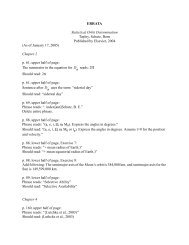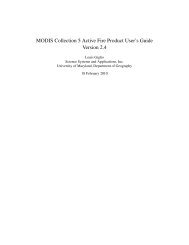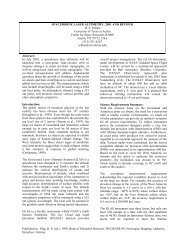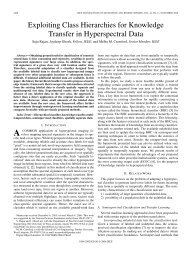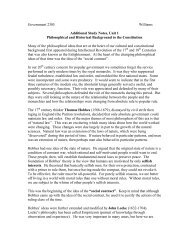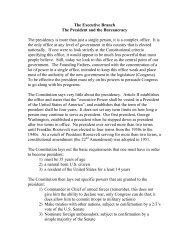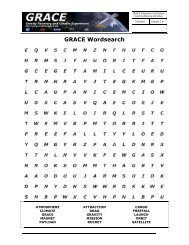(GLAS) PRECISION ATTITUDE DETERMINATION - Center for ...
(GLAS) PRECISION ATTITUDE DETERMINATION - Center for ...
(GLAS) PRECISION ATTITUDE DETERMINATION - Center for ...
You also want an ePaper? Increase the reach of your titles
YUMPU automatically turns print PDFs into web optimized ePapers that Google loves.
3.2.1 Gyro ModelFarrenkopf's gyro model [8] [52] has been widely accepted and used <strong>for</strong> many years. Itbasically separates the gyro noise into three noise types called electronic noise, oat torquenoise and oat torque derivative noise. The electronic noise is a kind of scale factor errorgenerated from electronic part of gyro. It is a colored noise, but it can be treated as whitenoise if the gyro time constant ismuch smaller than the gyro readout time interval, whichis usually true <strong>for</strong> the modern gyros. The oat torque noise (rate white noise) is simplewhite Gaussian noise superimposed on the gyro drift rate. The oat torque derivativenoise (drift rate ramp) is the cause of the gyro drift rate bias since its integration appearsto be rate random walk. This gyro characteristic eventually causes the measured data todeviate systematically from the true angular rate and this is why gyros need help from theexternal sources such as star, Sun or Earth. The gyro rate bias, due to the oat torquederivative, as well as the attitude parameters (e.g., quaternions) can be estimated withappropriate estimation algorithms.3.2.2 Gyro Data SimulationTo keep the laser altimeter pointing direction to the nadir direction, the ICESAT mustrotate about the orbit normal axis (z OBF ) once per orbital period. The nominal (andunperturbed) angular velocity with respect to the OBF can be assumed to be2 34 ! x! y! z5 =24 0:00:02T35 (3.8)where T is the orbital period of the ICESAT. However, when the attitude determinationprocess is simulated <strong>for</strong> the multiple orbits of the ICESAT, the simple angular velocity inEquation 3.8 makes the CCD star tracker to repeatedly image the same group of stars. Toavoid this unrealistic situation, Equation 2.14 is used to provide nominal angular velocity,based on 3-1-3 Euler angle rotations from the CRF to the OBF :! x = _ sin u sin i + didt cos u! y = _ cos u sin i ; didt! z = _ cos i + _u:sin u (3.9)The expected value of _ is approximately 0:5 =day <strong>for</strong> the ICESAT [19] anddt diassuming the inclination of the spacecraft to be constant in the simulation.is zero byTo generate noisy gyro data, the expected gyro noises must be added. Assuming that thedirection of the gyro's input axis is aligned with the OBF, the simulated (gyro-measured)angular velocity oftheith gyro, g i , is obtained from Farrenkopf's gyro model [52] :g i =(1+k i ) ! i + b i0 + b i + i1 (3.10)28



